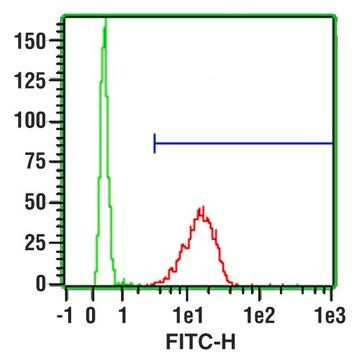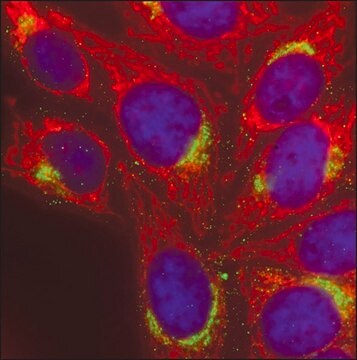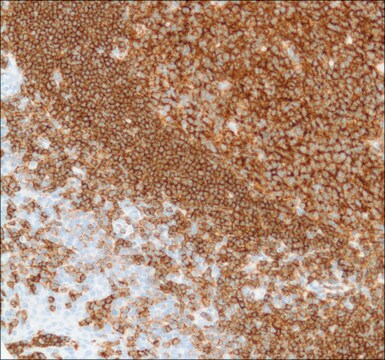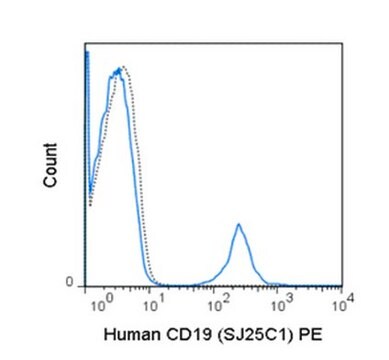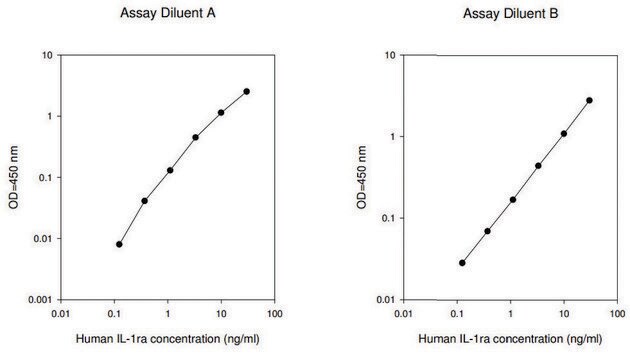SAB4700112
Monoclonal Anti-CD19-FITC antibody produced in mouse
clone LT19, purified immunoglobulin, buffered aqueous solution
Anmeldenzur Ansicht organisationsspezifischer und vertraglich vereinbarter Preise
Alle Fotos(1)
About This Item
UNSPSC-Code:
12352203
NACRES:
NA.44
Empfohlene Produkte
Biologische Quelle
mouse
Qualitätsniveau
Konjugat
FITC conjugate
Antikörperform
purified immunoglobulin
Antikörper-Produkttyp
primary antibodies
Klon
LT19, monoclonal
Form
buffered aqueous solution
Speziesreaktivität
human
Methode(n)
flow cytometry: suitable
Isotyp
IgG1
NCBI-Hinterlegungsnummer
UniProt-Hinterlegungsnummer
Versandbedingung
wet ice
Lagertemp.
2-8°C
Posttranslationale Modifikation Target
unmodified
Angaben zum Gen
human ... CD19(930)
Allgemeine Beschreibung
The antibody LT19 reacts with CD19 (B4), a 95 kDa type I transmembrane glycoprotein (immunoglobulin superfamily) expressed on B lymphocytes and follicular dendritic cells; it is lost on plasma cells.
Immunogen
Daudi human Burkitt lymphoma cell line
Anwendung
The reagent is designed for Flow Cytometry analysis of human blood cells using 20 μL reagent / 100 μL of whole blood or 1e6 cells in a suspension. The content of a vial (2 mL) is sufficient for 100 tests.
Leistungsmerkmale und Vorteile
Evaluate our antibodies with complete peace of mind. If the antibody does not perform in your application, we will issue a full credit or replacement antibody. Learn more.
Physikalische Form
Solution in phosphate buffered saline containing 15 mM sodium azide and 0.2% high-grade protease free BSA as a stabilizing agent.
Haftungsausschluss
Unless otherwise stated in our catalog or other company documentation accompanying the product(s), our products are intended for research use only and are not to be used for any other purpose, which includes but is not limited to, unauthorized commercial uses, in vitro diagnostic uses, ex vivo or in vivo therapeutic uses or any type of consumption or application to humans or animals.
Sie haben nicht das passende Produkt gefunden?
Probieren Sie unser Produkt-Auswahlhilfe. aus.
Lagerklassenschlüssel
10 - Combustible liquids
WGK
WGK 2
Flammpunkt (°F)
Not applicable
Flammpunkt (°C)
Not applicable
Hier finden Sie alle aktuellen Versionen:
Besitzen Sie dieses Produkt bereits?
In der Dokumentenbibliothek finden Sie die Dokumentation zu den Produkten, die Sie kürzlich erworben haben.
Carrie E Gifford et al.
Cytometry. Part B, Clinical cytometry, 86(4), 263-271 (2014-03-13)
X-linked lymphoproliferative disease is caused by mutations in two genes, SH2D1A and XIAP/BIRC4. Flow cytometric methods have been developed to detect the gene products, SAP and XIAP. However, there is no literature describing the accuracy of flow cytometric screening performed
I Pizzitola et al.
Leukemia, 28(8), 1596-1605 (2014-02-08)
As significant numbers of acute myeloid leukemia (AML) patients are still refractory to conventional therapies or experience relapse, immunotherapy using T cells expressing chimeric antigen receptors (CARs) might represent a valid treatment option. AML cells frequently overexpress the myeloid antigens
Chung-Wu Lin et al.
Blood, 106(10), 3567-3574 (2005-07-28)
Most lymphoblastic lymphomas (LBLs) are regarded as neoplasms of immature T cells because they express cytoplasmic CD3 and frequently carry T-cell receptor (TCR) gene rearrangements. Immature natural killer (NK) and T cells, however, have a common bipotent T/NK-cell precursor in
J Pieper et al.
Scandinavian journal of immunology, 79(2), 149-155 (2013-12-10)
Proinflammatory CD4(+) CD28(null) T cells are frequently found in the circulation of patients with rheumatoid arthritis (RA), but are less common in the rheumatic joint. In the present study, we sought to identify functional differences between CD4(+) CD28(null) T cells
Unser Team von Wissenschaftlern verfügt über Erfahrung in allen Forschungsbereichen einschließlich Life Science, Materialwissenschaften, chemischer Synthese, Chromatographie, Analytik und vielen mehr..
Setzen Sie sich mit dem technischen Dienst in Verbindung.
